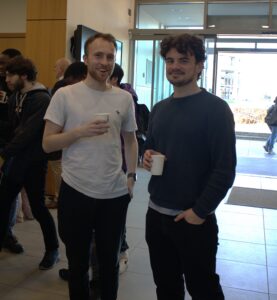Wireshark is one of the world’s most widely used network analysis tools, and it comes with great pride that recent graduate Shubh Sinhal’s CS4099 Project “Wireshark and ILNP” has been included within the tool’s official codebase.
Shubh developed a Wireshark ILNP dissector that could be used for the ease of study for researchers and students interested in investigating and testing Identifier Locator Network Protocol (ILNP). Commenting on his work, he stated that his goals were “to identify ILNP flows, validate checksums, and produce tables for tracking and analysing data.” In this way, Shubh’s project adds the ability for Wireshark to detect and analyse ILNP traffic in TCP and UDP segments, check data integrity, and provide new filters and tracking tools for flow analysis. He notes:
I wanted to work on a large, well-known code base to gain experience with complex software and understand how such projects are organised. Since IP is still the dominant protocol, there is little work on new Internet layer protocols, and through the networking modules offered by St Andrews, I gained an interest in Internet architecture and protocol design for communication between devices located across the globe.
The CS4099 module prepares students to design, develop, and test a software system. Pursuing such a project involves students embracing independent research that can have an impactful effect on current software tools. Shubh relays that by supporting ILNP in Wireshark, “it lays the groundwork for potential wider adoption of an alternative internet layer protocol that improves on IPv6 with better mobility and multi-homing capabilities and simpler network management.” This development opens the door for innovation and unexplored opportunities in the future, including “new uses and features, as well as the improvement of performativity,” which in turn could lead to “ILNP becoming a strong alternative to traditional IP.”
With the guidance of his supervisor, Saleem Bhatti, Shubh remarks how the module’s personalized mentorship allowed him to “navigate” a complex code base and “strengthen” his capacity for software development by improving his abilities in understanding existing documentation and code, testing, debugging and producing documentation of his own. Most importantly, he reflects on how the project strengthened his confidence in working with real-world software and networking technologies, as well as improved his ability to work effectively with existing code, therefore giving him the chance to “explore an experimental protocol and contribute to open source by creating a useful tool that others can build on.”
With Shubh Sinhal now being credited on the list of authors for Wireshark, his contribution has shown how research within the School of Computer Science, as well as the engineers graduating from the school, are creating real impact through software applications within academia and beyond.
Information about ILNP can be found at https://ilnp.cs.st-andrews.ac.uk/. With the main part of the codebase Shubh produced being located in the master branch of the Wireshark GitHub repo here.
By Nina Globerson










































